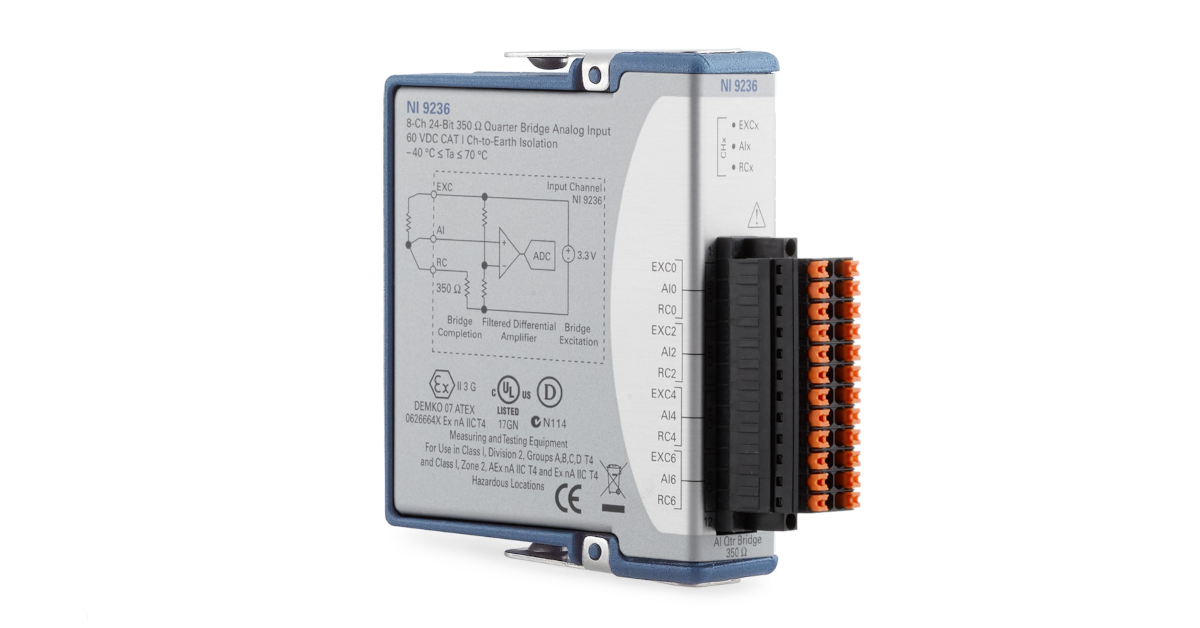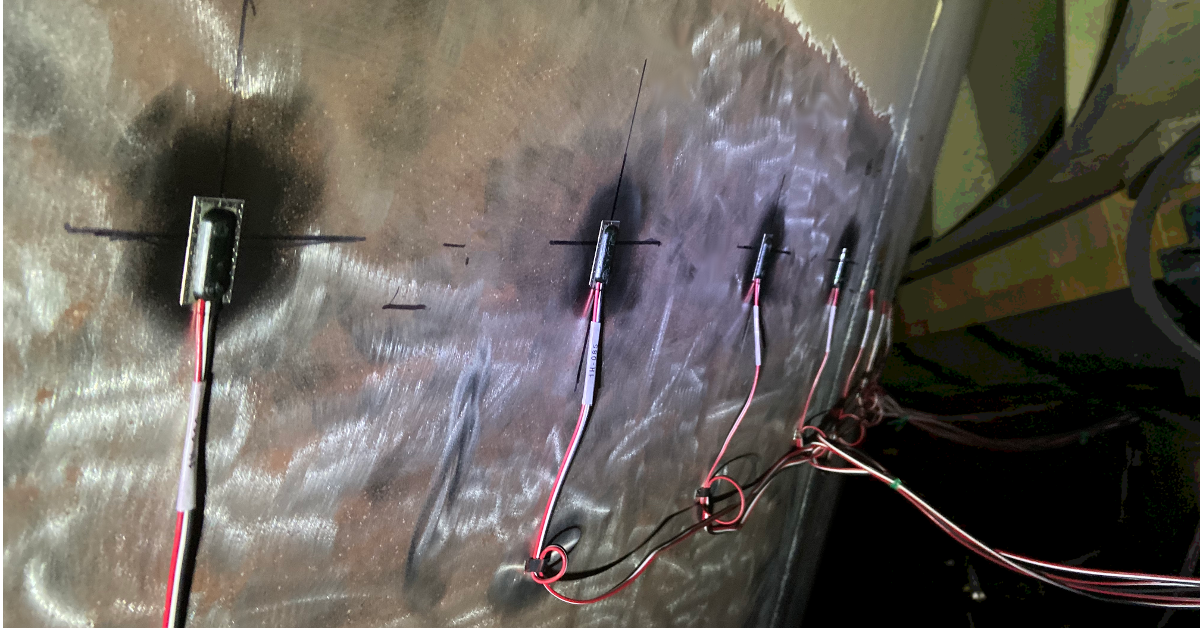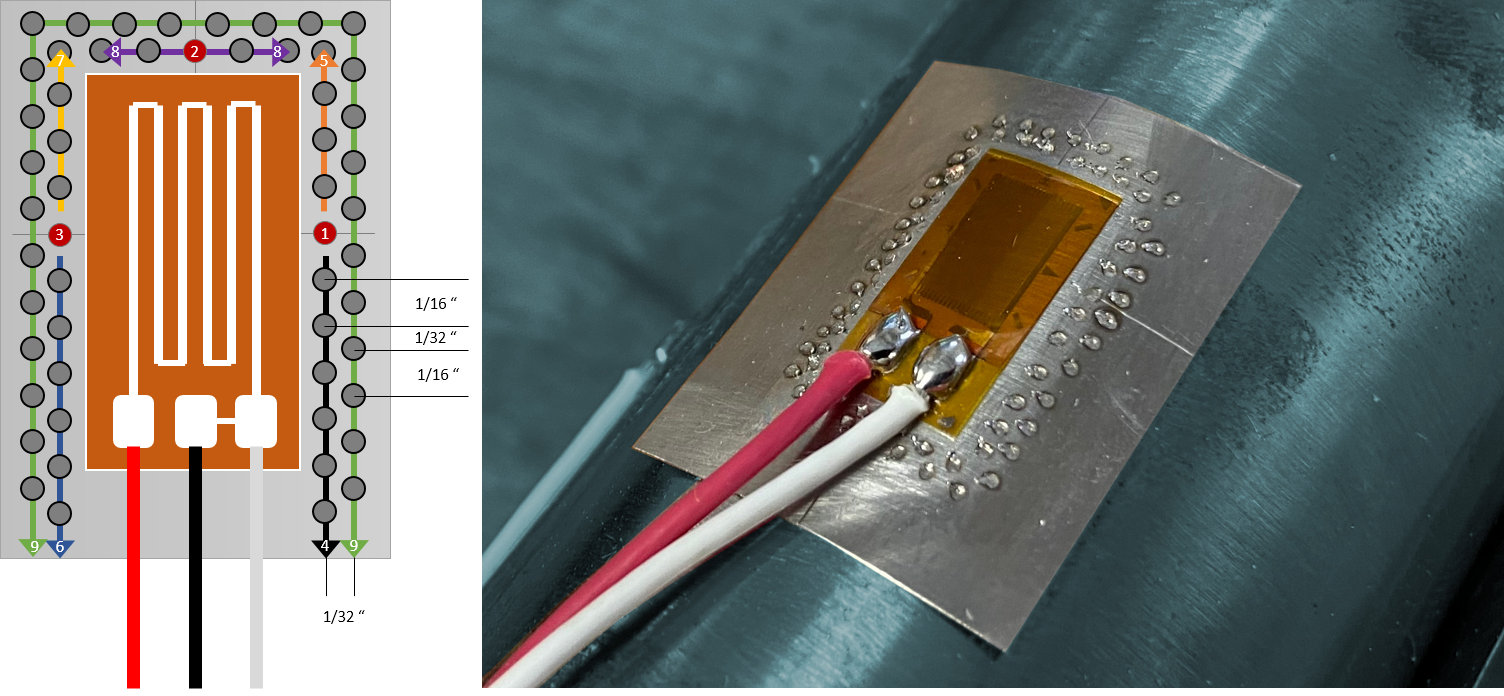High Channel Count Synchronous Datalogging
Faced with the challenge of testing a large and complex on‐highway vehicle, engineers from Integrated Test & Measurement knew it would take hundreds of channels…
Faced with the challenge of testing a large and complex on‐highway vehicle, engineers from Integrated Test & Measurement knew it would take hundreds of channels…
Obvious signs of fatigue — cracks at the corners of doors — had begun to surface on an in-service Railcar. A railcar structural testing case study.

The most common strain gauge installation configuration is a 350 ohm, quarter bridge. Quarter bridge installations a generally the easiest and most economical installation for determining structural strain levels. In the quarter bridge configuration a single element strain gauge is mounted in the principle axial or bending strain direction.
One tool that our engineers and technicians use to collect data from 350 ohm, quarter bridge strain gauge installations is the NI-9236 strain module. The NI-9236 is an 8-Channel C Series 350 ohm strain/bridge input module that is used with a CompactDAQ or CompactRIO chassis. This module provides bridge excitation (3.3 Volts), Wheatstone bridge completion, shunt calibration, and filtering for 350 ohm quarter bridges. Use this module in conjunction with a CompactDAQ chassis and iTestSystem engineering measurement software to collect synchronized, high-speed (10kHz) structure strain data.
For more information about the NI-9236, DAQ module rental, strain gauge installations or our data logging solution iTestSystem, contact Ryan Welker via email: ryan.welker@itestsystem.com or phone: (844) 837-8797 x702
A case study describing a strain gauge DAQ system used to validate several new designs of a heavy lift lattice boom crane to comply with SAE J987 standards.

When it comes to measuring structural stresses and load, every application is unique, and sometimes that means using a different solution. In some cases where strain gauges are applied, it can be advantageous or even necessary to use weldable strain gauges instead of chemical bonding the strain gauges to the specimen.
Since many epoxies used to chemically bond strain gauges require specific heat and pressure for curing, it can be difficult or even impossible to use this method on large or irregular structures. Weldable strain gauges offer an advantage in this situation as they eliminate the need to clamp and cure any epoxies for bonding. In addition, weldable gauges can be installed in a variety of environments and weather conditions which offers additional advantages over traditionally bonded strain gauges. Although weldable strain gauges are applied differently, they function in much the same way as their bondable counterparts.
To properly install a weldable strain gauge, you will need:
Always remember to have the proper safety equipment on hand, such as eye protection and gloves, as well as any PPE required by your environment.
When installing a weldable strain gauge, you must first prep the area. Unlike bondable gauges, the area does not need to be polished to a fine degree. Simply degrease the gauge area, sand down any paint, coatings or excess debris and ensuring the area is purely metallic and free of chemicals is enough. A clean metal surface is important to the welding process.
After the part has been cleaned, you can position the gauge. Most weldable gauges come marked so you can align the grid properly. When the gauge is properly aligned, spot weld the gauge on either side of the gauge along the centerlines, to hold it firmly in position and prevent shifting as the gauge is welded further. Once secure, the gauge should be welded all around the carrier surface, as illustrated below.

Recap:
For more information about our strain gauging and testing services, contact Ryan Welker @ (844) 837-8797 x702.
Related Links
ITM | Integrated Test + Measurement
227 Water Street, Suite 300
Milford, OH 45150
Phone: 1.844.TestSys
Fax: 513.248.8453
Email: ITM Sales

ITM provides software development, structural and mechanical testing services, industrial monitoring, strain gauging, and data analysis solutions to clients on six continents. ITM is a recognized National Instruments Gold Alliance Partner.

